Choosing the Perfect Couch for Your Living Room: Complete Guide
The couch is undoubtedly the centerpiece of any living room - it's where families gather, guests are entertained, and relaxation happens after long days. Selecting the right couch for your living room involves more than just picking a comfortable seat; it requires careful consideration of size, style, functionality, and how it fits within your overall living space. The perfect couch should balance aesthetic appeal with practical comfort while complementing your room's dimensions and layout.
In this comprehensive guide, we explore everything you need to know about choosing the ideal couch for your living room. We've evaluated numerous options based on comfort, durability, style versatility, and space efficiency to help you make an informed decision. Whether you're furnishing a new home, updating your current space, or simply looking for the perfect seating solution, this review will help you find a couch that enhances both the beauty and functionality of your living room.
Our Living Room Couch Recommendations
⚠️ AFFILIATE DISCLOSURE: This website contains affiliate links. As an Amazon Associate, we earn from qualifying purchases. If you make a purchase through these links, we may receive a small commission at no additional cost to you. Read our full affiliate policy.
Living Room Couch Comparison & Recommendations
Which Living Room Couch is Right for You?
🏆 Best Overall: Classic 3-Seater Sofa
Standard Sofa
💰 Best for Flexibility: Modular Sectional
Sectional Sofa
⭐ Best for Comfort: Reclining Sofa
Recliner Sofa
Couch Comparison Summary
- Size Considerations: Standard sofas (72-96 inches) fit most rooms, while sectionals require more space but offer greater seating
- Comfort Features: Look for high-density foam cushions, supportive frames, and appropriate seat depth for your height
- Style Versatility: Traditional sofas offer timeless appeal, while modern designs provide contemporary aesthetics
- Material Durability: Performance fabrics withstand heavy use, while leather offers easy maintenance and sophistication
- Functionality: Consider storage options, sleeper mechanisms, or reclining features based on your needs
Living Room Couch Advantages & Considerations
After evaluating numerous living room couches, here is an in-depth analysis of the benefits and practical considerations when selecting the centerpiece of your living space:
✅ Couch Advantages
Central Focal Point: A well-chosen couch serves as the visual anchor of your living room, setting the tone for your entire decor scheme and creating a cohesive look.
Comfort and Relaxation: Quality couches provide essential comfort for daily relaxation, family gatherings, and entertaining guests in your main living area.
Style Statement: Your couch makes a significant style statement, reflecting your personal taste and contributing to the overall aesthetic of your home.
Functional Versatility: Modern couches often include additional features like storage, sleeper functions, or reclining mechanisms that enhance their utility.
Social Hub: The living room couch naturally becomes the social center of your home, facilitating conversation and connection among family and friends.
❌ Practical Considerations
Space Requirements: Couches demand significant floor space and must be carefully scaled to your room dimensions to maintain comfortable traffic flow.
Maintenance Needs: Different materials require specific cleaning methods and regular maintenance to preserve appearance and longevity.
Delivery Challenges: Large couches may present delivery difficulties, especially in buildings with narrow stairwells, elevators, or tight corners.
Style Longevity: Trendy designs may date quickly, while extremely traditional styles might not adapt well to evolving decor preferences.
Investment Level: Quality couches represent a significant financial investment that should withstand years of use while maintaining comfort and appearance.
Living Room Impact Analysis
A well-chosen couch dramatically enhances both the functionality and aesthetic appeal of your living room. While requiring careful consideration of space, style, and budget, the right couch serves as a long-term investment in your home's comfort and social dynamics, creating a welcoming environment for years to come.
Tips for Choosing the Perfect Couch for Your Living Room
Selecting the ideal couch for your living room requires balancing multiple factors including size, comfort, style, and functionality. Follow this comprehensive guide to make an informed decision that enhances your living space:
8 Essential Factors When Choosing a Living Room Couch
1. Measure Your Space Precisely
Before shopping, measure your living room carefully, noting doorways, windows, and traffic patterns. Create a floor plan with painter's tape to visualize the couch's footprint and ensure adequate walking space around it.
2. Consider Your Lifestyle
Evaluate how you use your living room. For families with children or pets, choose durable, stain-resistant fabrics. For formal entertaining, consider elegant materials and sophisticated designs that make a style statement.
3. Determine Optimal Size and Scale
Choose a couch proportional to your room size. In standard living rooms (12x18 feet), a 84-96 inch sofa typically works well. Leave 18-24 inches for walkways and ensure the couch doesn't block natural traffic patterns.
4. Select Appropriate Style
Consider your overall decor theme. Traditional sofas with rolled arms work in classic settings, while clean-lined modern designs suit contemporary spaces. Transitional styles offer versatility that bridges different design aesthetics.
5. Evaluate Comfort and Support
Test couch comfort personally when possible. Look for supportive seat depth (typically 20-24 inches), appropriate back height, and quality cushion materials like high-resiliency foam that maintains shape over time.
6. Choose the Right Material
Consider fabric durability, cleaning requirements, and comfort. Performance fabrics resist stains and wear, while leather offers sophistication and easy maintenance. Natural fibers provide breathability but may show wear more quickly.
7. Assess Frame Quality and Construction
Look for sturdy hardwood frames with reinforced joints. Kiln-dried wood resists warping, while corner blocks add stability. Quality construction ensures your couch will withstand daily use without sagging or squeaking.
8. Plan for Long-Term Use
Consider how the couch will age with your family and decor. Neutral colors offer more versatility for changing accessories, while classic styles remain relevant longer than trend-driven designs.
Recommendations Based on Room Type
- Formal Living Rooms: Elegant traditional sofas with refined details and premium upholstery
- Family Rooms: Durable sectionals or reclining sofas with stain-resistant fabrics
- Open-Concept Spaces: Modular sectionals that define areas without blocking sight lines
- Apartments: Apartment-sized sofas or clever space-saving designs with multifunctional features
- Entertainment Spaces: Comfort-focused sectionals or recliners oriented toward media viewing
Frequently Asked Questions About Living Room Couches
What size couch is best for a standard living room?
For most standard living rooms (12x18 feet), a 84-96 inch sofa works well. Leave 18-24 inches of walking space around the couch and ensure it doesn't block traffic flow. Measure your space carefully and consider the room's proportions before deciding. For smaller rooms, consider apartment-sized sofas (70-84 inches), while larger spaces can accommodate sectionals or multiple seating pieces.
How far should a couch be from the TV?
The ideal distance depends on your TV size. For a 55-inch TV, position your couch 7-9 feet away. For larger screens, increase the distance proportionally. The general rule is 1.5 to 2.5 times the diagonal screen measurement for optimal viewing comfort. Also consider eye level - the center of the TV should be at or slightly below eye level when seated for most comfortable viewing.
What couch style is most comfortable for daily use?
For daily comfort, look for sofas with deep seats (36-40 inches), high-quality cushioning (high-density foam or down blend), and supportive backrests. Sectionals with chaise lounges and reclining sofas also provide excellent comfort for regular use. Pay attention to arm height and seat height - these should allow comfortable arm positioning and easy sitting/standing for all users.
How do I choose between a sofa and a sectional for my living room?
Choose a standard sofa for smaller spaces or formal layouts. Sectionals work best in open-concept rooms, large spaces, or for family rooms where maximum seating is needed. Consider your room shape, traffic patterns, and how you use the space before deciding. Sectionals offer great flexibility but require more floor space, while traditional sofas provide clearer traffic flow and work better in defined living areas.
What couch color is best for a living room?
Neutral colors like gray, beige, or navy offer the most versatility and hide wear well. Consider your lifestyle - light colors show stains more easily, while patterns and textures can conceal dirt. Choose a color that complements your existing decor and fits your maintenance preferences. If you prefer bold colors, consider using them in accessories and keeping your couch neutral for long-term flexibility.
Conclusion
Choosing the perfect couch for your living room is a significant decision that impacts both the functionality and aesthetic of your most used living space. The ideal couch balances comfort, style, durability, and proper proportion to create a welcoming environment for family and guests alike. By considering your specific needs, room dimensions, and lifestyle requirements, you can select a couch that serves as both a comfortable retreat and a beautiful centerpiece for years to come.
Living room couches are most suitable for homeowners and renters looking to create a comfortable, stylish gathering space. While the investment requires careful consideration of multiple factors, the right couch enhances daily living, facilitates social connections, and contributes significantly to your home's overall atmosphere and functionality.
Ready to Choose Your Living Room Couch?
Check out the best living room couch selections above and find the one that best suits your needs. Each product has been selected based on comfort, style, durability, and user reviews to ensure you get the best seating solution for your living space.
Related Articles You Might Like
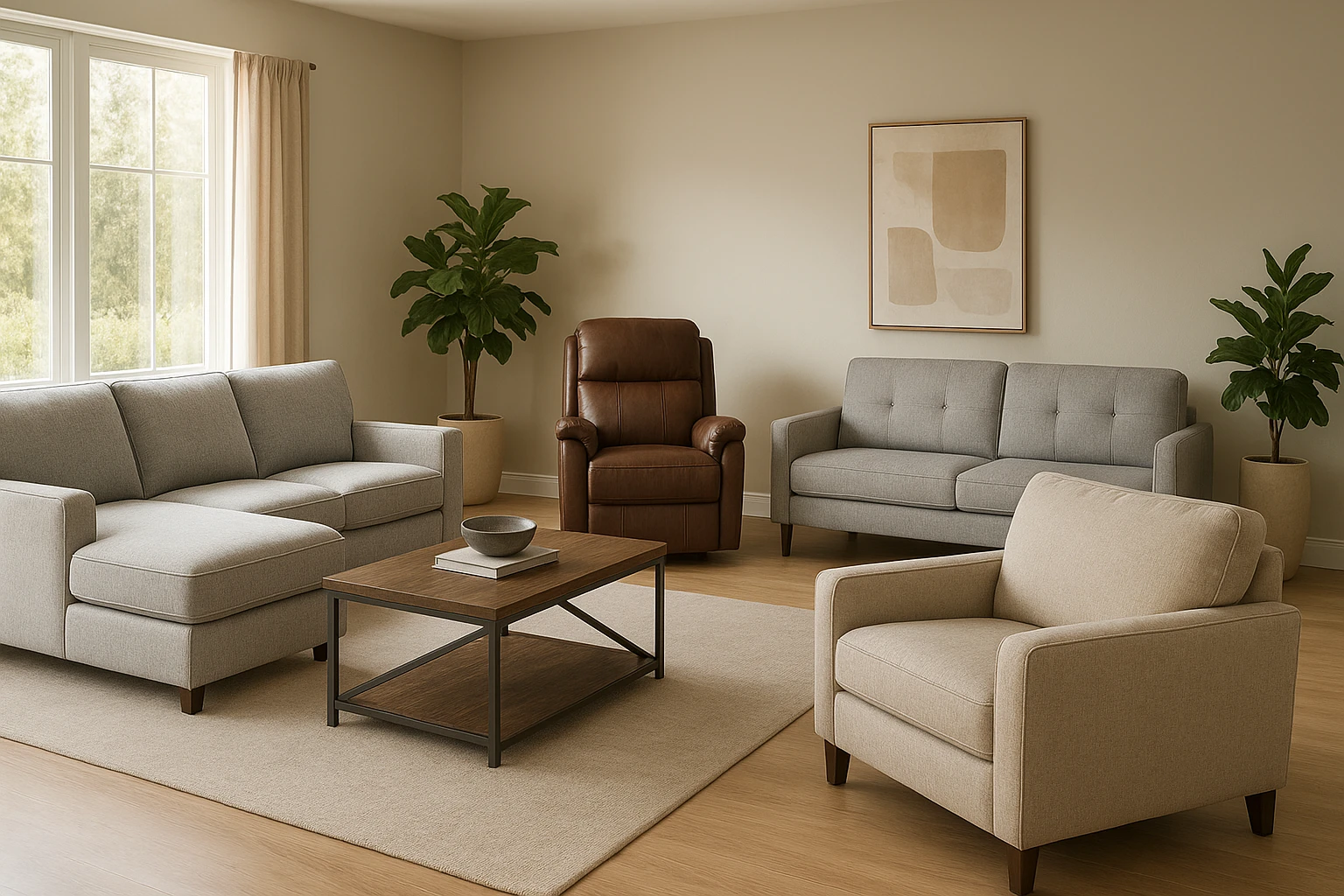
Explore the complete guide to different sofa types including sectionals, loveseats, camelbacks and chesterfields to find your perfect match.
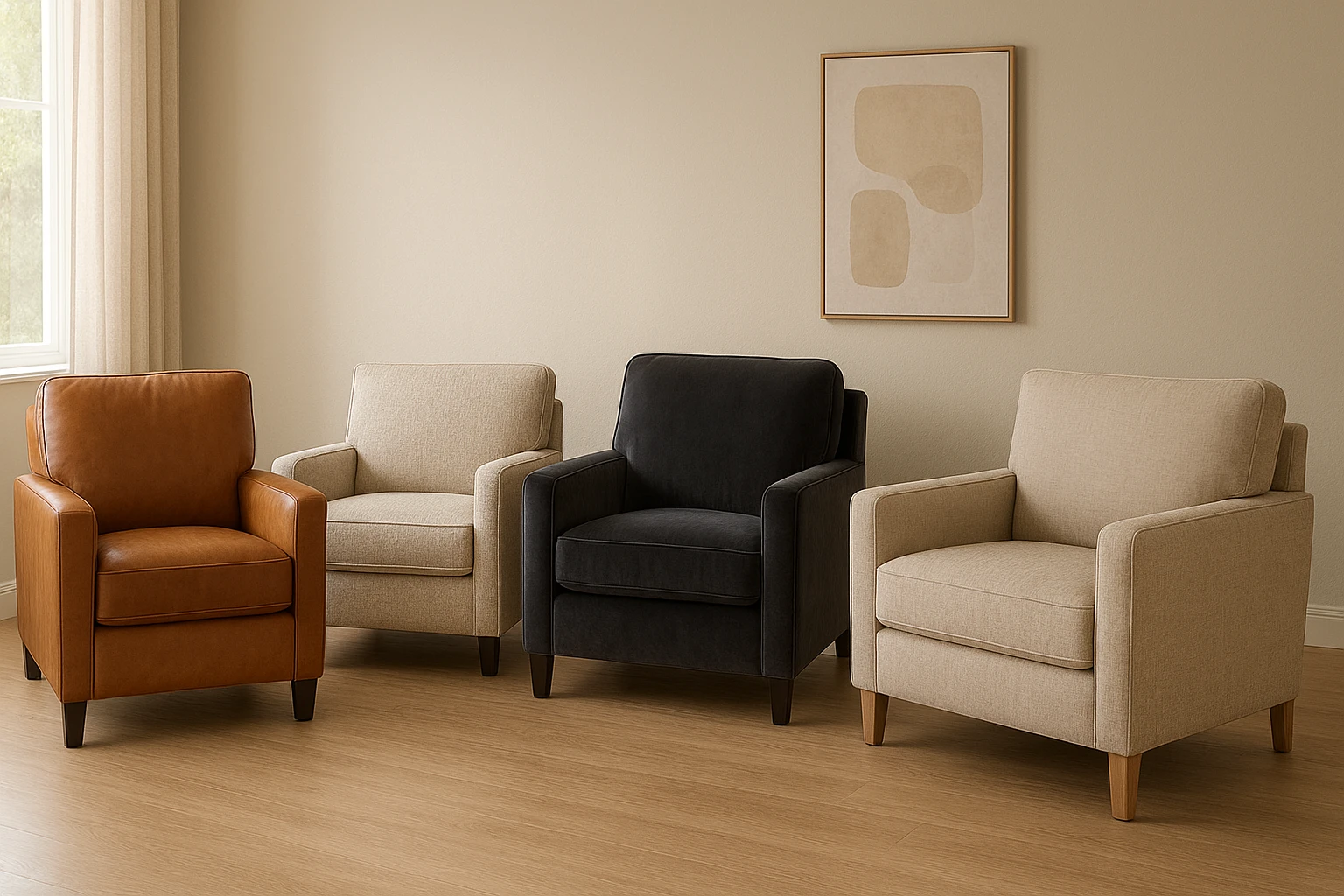
Comprehensive comparison of sofa upholstery materials including durability, comfort, maintenance and cost factors for informed decisions.
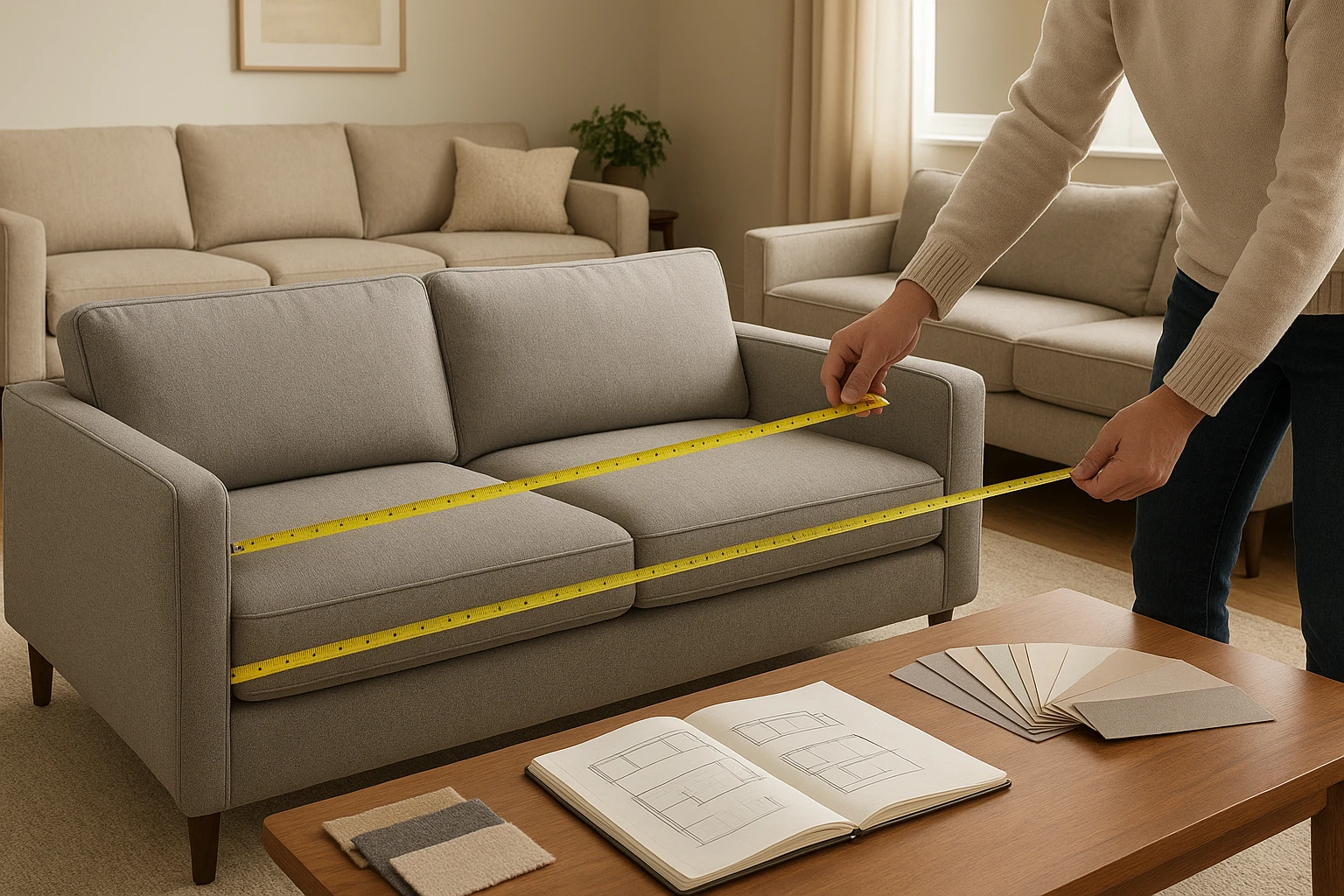
Step-by-step guide to selecting the perfect sofa including sizing, style, comfort and budget considerations for your living space.
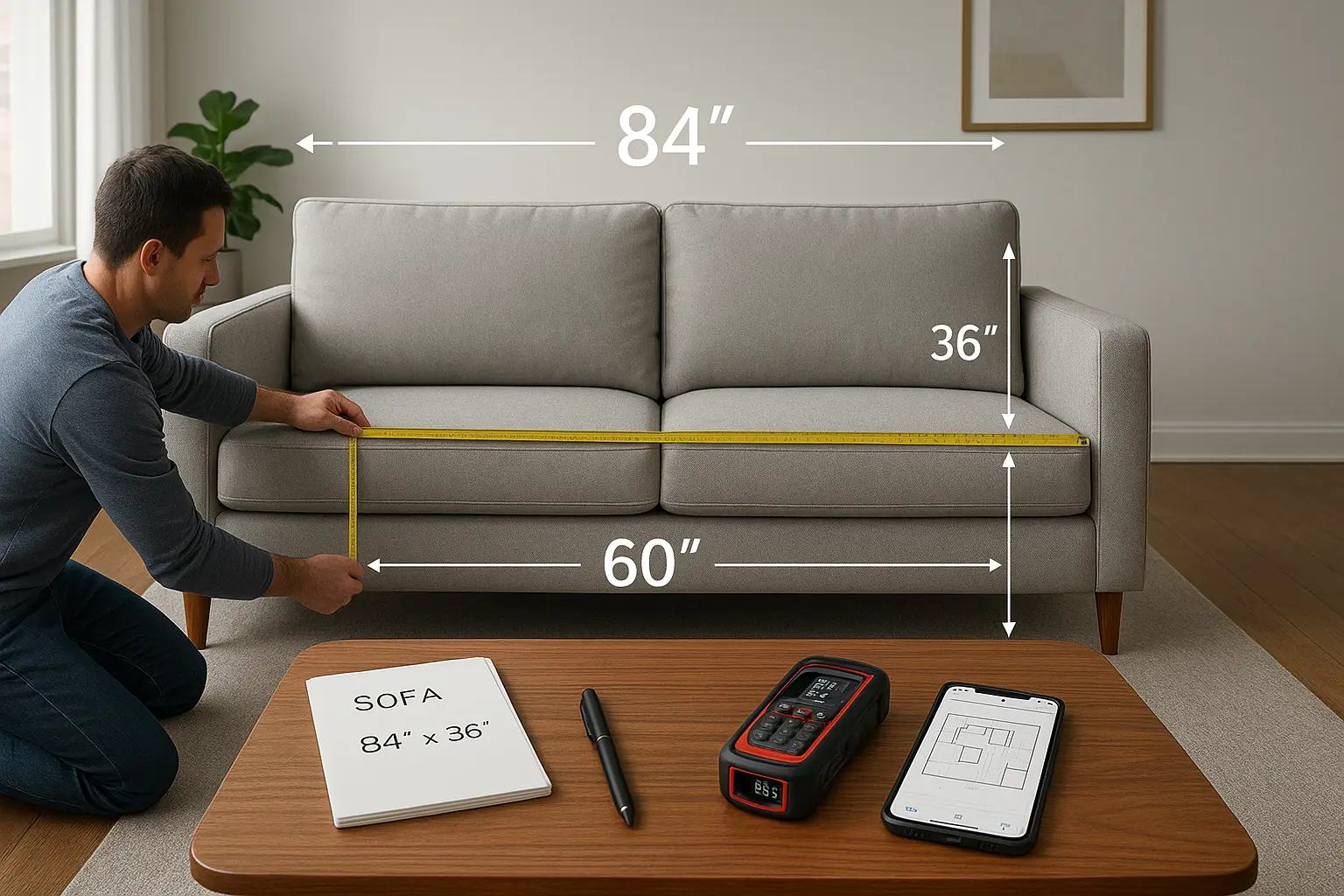
Learn how to properly measure your room and select the ideal sofa size based on your space constraints and furniture layout needs.
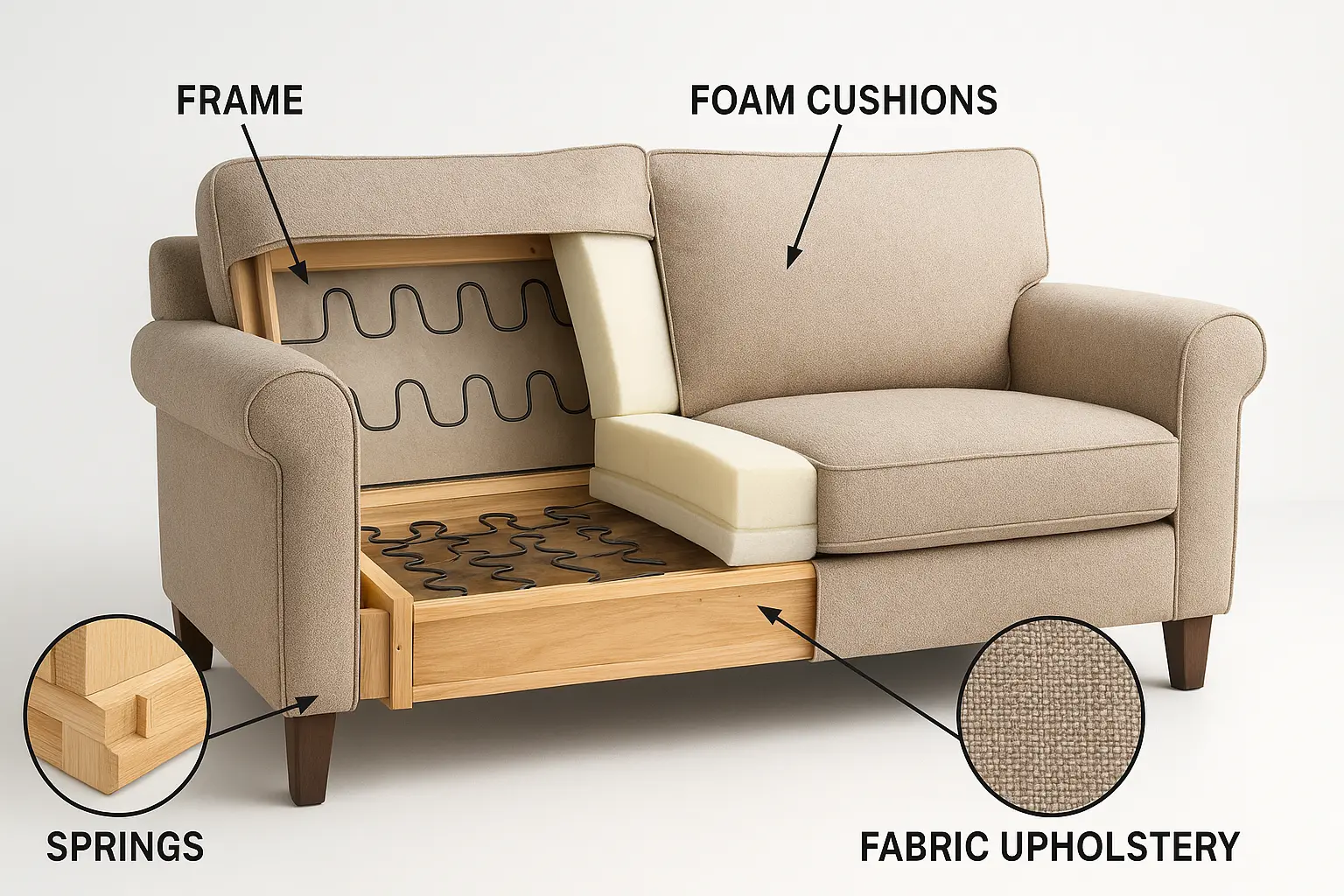
Detailed breakdown of sofa construction including frame types, cushion materials, suspension systems and upholstery options.

Essential guidance for purchasing sofas online including measuring advice, fabric selection, return policies and avoiding common pitfalls.